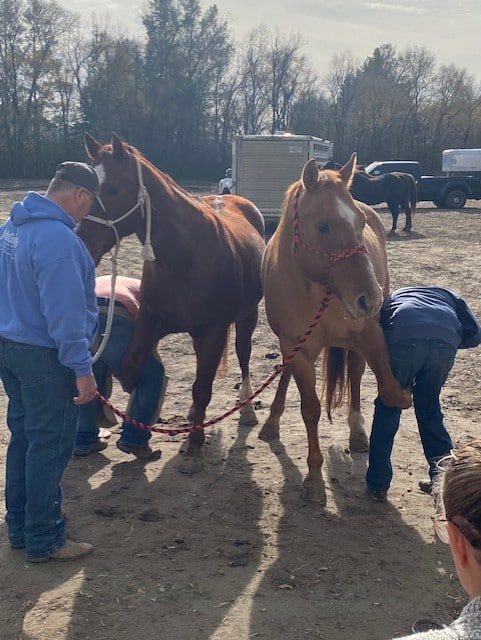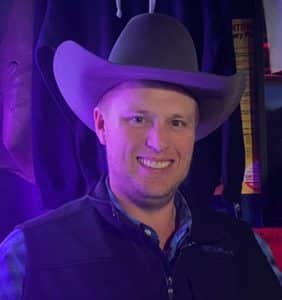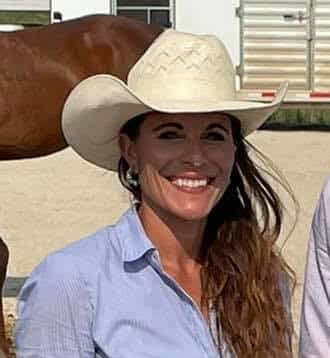Healthy Hooves, Happy Horses

Kalenze teaching the next generation how to pull horseshoes. [Photo: submitted]
One of the most important points that veteran horse shoer Casey Kalenze said to help horse owners is to keep horses on a regular shoeing and trimming schedule.
“A scheduled shoeing and trimming program may be six to eight weeks, depending on the horse’s specific needs or requirements,” said Kalenze.
“A regular schedule does a variety of things for horse hoof health including preventing hoof distortions, preventing lameness issues, performance and safety of the horse and rider,” said Kalenze.
A horse shoer can find things than an owner can miss include: swelling, heat, or abscesses.
Kalenze does note that the top statements are ‘above his pay grade,’ but when he sees fit, he will advise to work with a vet when he notices something that may be affecting the horse’s health.
“Working with your horses on a regular basis and handling their feet at a young age, helps your horse shoer and your horse so much,” Kalenze added. He noted that a little work in the primitive years, goes a long ways for the latter years to come.
Shoeing versus trim:
Some things to be attentive to when debating if a horse needs a set of shoes versus a trim, according to the shoer is to look at the hoof health and if it is being compromised.
Some things to be aware of are: chunks breaking out, extreme bruising of the hoof, stumbling, and if you plan on starting to travel or haul. These are signs it may be time for a set of shoes.
“It’s not necessarily the arenas, it’s the parking lots, that are hard on hoof health, “added Kalenze.
Overall, to help maintain and improve hoof health to any horse owner, Kalenze said that proper nutrition plays a big role. “I see healthy feet on horses that are consistently on a good quality feed. That doesn’t mean a ton of top dressings or feed supplements, but the quality of hay, forage and grain is of high quality,” noted the shoer.
What happens when you blow a shoe?
Kalenze advises that you don’t pull the other shoe off.
Why?
Then, you would have two exposed feet versus one.
What if another shoer has to put the shoe on?
“If I’m putting someone else’s shoe on, I put it as close to match up with the other hoof as perfect as I can. I don’t change someone else’s work, that’s not my job. Making the shoes matchup is all a shoer can do when working with another client’s horse,” explained Kalenze.
At the end of the day, “I can’t tell anyone or advise anyone how to shoe — it’s a lot of feel and years under the horse,” confirmed Kalenze.

Casey Kalenze has been in the farrier business since 2004. After attending Cowtown Horseshoeing School (Miles City), he has built his business to serve SW & NW North Dakota, SE Montana, and Wickenburg, Arizona in the winter months. When he isn’t ‘hanging iron,’ you can find him in the roping arena.

Tisa Peek is a long-time horse trainer, competitor in barrel racing and team roping, and writer about the equine. Rodeo and horses run deep in her roots. JT Family Equine is where she calls home, south of Bismarck, ND. Tisa, along with her husband, Jon, and boys, Blu and River, train horses and host clinics. Tisa is the host for Dakota Cowboy on BEK TV.
